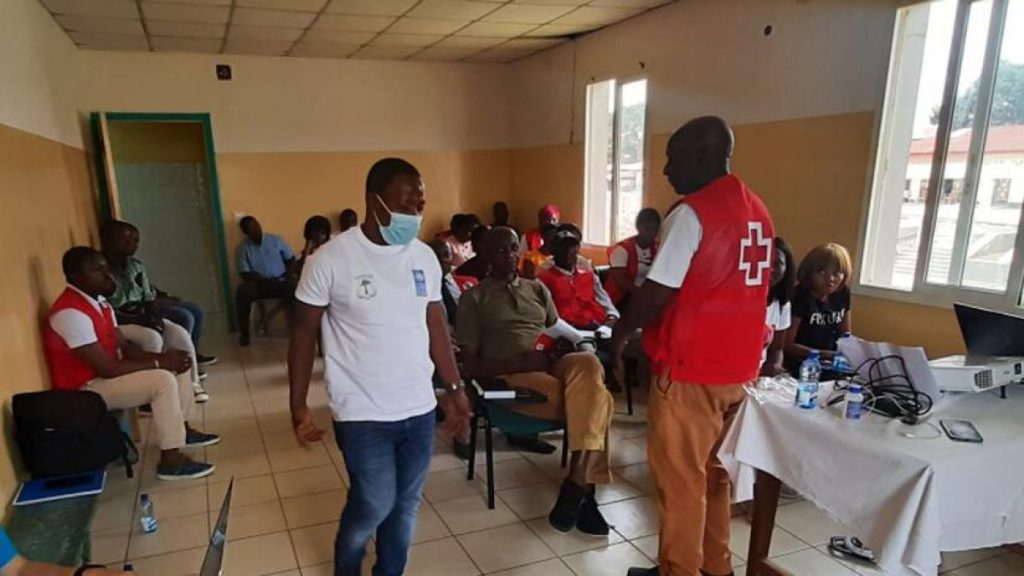Since the airline Emirates posted a Marburg warning to customers flying from Oman to Tanzania, there have been unfounded fears a deadly pandemic will follow. So far, 15 cases of the Ebola-related disease have been confirmed in just two of the 54 African countries, which have a total population of 1.4 billion. The countries affected are Equatorial Guinea in West Africa, and Tanzania in East Africa, with eight cases in Tanzania, and nine in Equatorial Guinea. In total, 12 people have died. By comparison, Africa’s biggest killer, tuberculosis (TB), claimed the lives of 400,000 in 2015. Nevertheless, the Marburg outbreak has sparked concerned news headlines worldwide, and many in Tanzania and elsewhere fear that cautious tourists will cancel their travel plans. Tourism is vital to many African economies and a major source of income for wildlife preservation. In early April, Emirates’ website warned that ‘customers arriving in Oman — and who have travelled from the impacted countries — must isolate themselves and seek immediate assistance if they feel unwell within 21 days of travel’. Meanwhile, Oman’s health authorities urged travellers to postpone trips to Tanzania and Equatorial Guinea. Experts say there is no need to panic as Marburg is notoriously hard to contract. Unlike Covid-19, Marburg is not an airborne virus, and is a zoonotic disease that comes from prolonged exposure to fruit bats. It can be caught through saliva exchanges or close contact with another infected person, but this is likely to only impact family members living in close proximity or those involved in preparing their deceased loved ones for burial. According to the World Health Organization (WHO): ‘Human infection initially results from prolonged exposure to mines or caves inhabited by Rousettus bat (Egyptian fruit bat) colonies.’
It added: ‘Individuals can only spread the infection via direct contact, (through broken skin or mucous membranes) with the blood, secretions, organs or other bodily fluids of infected people, and with surfaces and materials (e.g. bedding, clothing) contaminated with these fluids.’
There is no licensed treatment yet. African countries battling Ebola have found their own treatments and Marburg is similar to Ebola but less contagious. Sierra Leone dramatically reduced its Ebola death rate during the November 2014 outbreak, to 21.77 per cent, with the use of nano (colloidal) silver. This was compared with an average 45.7 per cent death rate. The worst outbreak that year was recorded in Liberia, which had 6,822 cases and 2,836 deaths (42 per cent); Guinea recorded 1,878 cases and 1,142 deaths (66 per cent) while Sierra Leone recorded 5,368 cases and 1,169 deaths (22 per cent). Quarantining the sick and scrupulous hygiene prevented the spread. The decision to treat Ebola patients with microscopic silver particles – which have antibacterial, antiviral, and anti-inflammatory properties – was made by Alpha Kanu, a geophysicist and Sierra Leone’s minister of presidential and public affairs. The West told Kanu nano (colloidal) silver would not work but Sierra Leone halved the fatality rate of Ebola. Zimbabwean Dr Jackie Stone, who was prosecuted by the Zimbabwean Medical Council for successfully treating Covid-19 patients with a cheap antiparasitic drug, told News Africa that if you add the antiparasitic drug Ivermectin, the broad-spectrum antimicrobial drug doxycycline, and the antioxidant supplement quercetin to the colloidal silver protocol most Marburg patients have a good chance of full recovery. Dr Stone said: ‘It is not the virus that kills the patient but the following cytokine storm, so if you can prevent that, you prevent deaths.’
A cytokine storm occurs when the body is trying to fight a severe infection. Cytokines play an important role in immune responses but if the body releases too many it can be harmful. Dr Stone added: ‘The minute the West hears there’s a Marburg outbreak, there go our Christmas bookings, so we are very invested in prevention and cure. Marburg is not incurable. We know these treatments work because we’ve watched them work.
‘The cytokine storm is an inflammatory response to the virus, but it will also only manifest in a vulnerable host. If you have a healthy microbiome, you will not have a cytokine storm. Zinc, vitamin C, and vitamin D3 promote a healthy microbiome. Anybody taking those daily has nothing to fear from Marburg.
‘If a cytokine storm does occur the best way to control it is a combination of colloidal silver, Ivermectin and doxycycline. We’ve managed to demonstrate that in a test tube.’
Marburg symptoms are frightening and unpleasant and include nausea, vomiting, chest pain, sore throat, abdominal pain, and diarrhoea. As the disease progresses, it can induce jaundice, inflammation of the pancreas, weight loss, delirium, shock, liver failure, massive internal haemorrhaging, multi-organ failure and eventually death. A potential vaccine has been developed in the US using a modified chimpanzee adenovirus and tested on just 47 healthy volunteers. According to the National Institutes of Health, the American governmental medical research organisation, it ‘shows promising results in the first in-human study.’ While the media talk up the virus, most Tanzanians are going about their daily business eating plenty of vitamin C-rich food and topping up their vitamin D from the sun.


